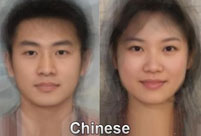 Fan Bingbing's "Queen style" in new play
Fan Bingbing's "Queen style" in new play
 Yanxi Lake: Venue for APEC China 2014
Yanxi Lake: Venue for APEC China 2014
 Top 10 pricey destinations for studying abroad
Top 10 pricey destinations for studying abroad
 Couple chase tornados to create perfect storm photos
Couple chase tornados to create perfect storm photos
 J-10 fighters show aerobatic stunts in smog-free sky
J-10 fighters show aerobatic stunts in smog-free sky
 Top 10 charming female soldiers of the PLA
Top 10 charming female soldiers of the PLA
 Charming contestants of Shanghai Int’l Model Contest
Charming contestants of Shanghai Int’l Model Contest
 Most amazing chi-pao beauties
Most amazing chi-pao beauties
 Beauties forever
Beauties forever
 Picturesque autumn scenery of Hongshan Army Horse Ranch
Picturesque autumn scenery of Hongshan Army Horse Ranch
CANBERRA, Oct. 20 -- Laser physicists in Australia have built a tractor beam that can repel and attract objects, using a hollow laser beam that is bright around the edges and dark in its center, the Australian National University (ANU) announced on Monday.
It is the first long-distance optical tractor beam and moved particles one fifth of a millimeter in diameter a distance of up to 20 centimeters, around 100 times further than previous experiments.
"Demonstration of a large scale laser beam like this is a kind of holy grail for laser physicists," said Professor Wieslaw Krolikowski, from ANU's Research School of Physics and Engineering.
The new technique is versatile because it requires only a single laser beam. It could be used, for example, in controlling atmospheric pollution or for the retrieval of tiny, delicate or dangerous particles for sampling.
The researchers can also imagine the effect being scaled up.
"Because lasers retain their beam quality for such long distances, this could work over meters. Our lab just was not big enough to show it," said co-author Dr Vladlen Shvedov, a driving force behind the ANU project, along with Dr Cyril Hnatovsky.
Unlike previous techniques, which used photon momentum to impart motion, the ANU tractor beam relies on the energy of the laser heating up the particles and the air around them. The ANU team demonstrated the effect on gold-coated hollow glass particles.
The particles are trapped in the dark center of the beam. Energy from the laser hits the particle and travels across its surface, where it is absorbed creating hotspots on the surface. Air particles colliding with the hotspots heat up and shoot away from the surface, which causes the particle to recoil, in the opposite direction.
To manipulate the particle, the team move the position of the hotspot by carefully controlling the polarization of the laser beam.
"We have devised a technique that can create unusual states of polarization in the doughnut shaped laser beam, such as star- shaped (axial) or ring polarized (azimuthal)," Dr Hnatovsky said.
"We can move smoothly from one polarization to another and thereby stop the particle or reverse its direction at will."
The work is published in Nature Photonics.
 A post-80s girl's tale of two cities
A post-80s girl's tale of two cities Shocking! Photos of Chinese fighters revealed
Shocking! Photos of Chinese fighters revealed Blue Angels thrill spectators in San Francisco
Blue Angels thrill spectators in San Francisco World's most intimidating nuclear weapons
World's most intimidating nuclear weapons Standard faces for each countries
Standard faces for each countries Netizens fall in love with champion swimmer Ning Zetao
Netizens fall in love with champion swimmer Ning Zetao Vibrant 21-year-old and her own Cheongsam brand
Vibrant 21-year-old and her own Cheongsam brand Fashion style: Faye Wong vs Cecilia Cheung
Fashion style: Faye Wong vs Cecilia Cheung Leading director Wang Quan'an detained for 'buying sex'
Leading director Wang Quan'an detained for 'buying sex' Top 10 handsome football players
Top 10 handsome football players  Top 10 Chinese goddesses
Top 10 Chinese goddesses  Top 20 hottest women in the world in 2014
Top 20 hottest women in the world in 2014 Top 10 fifth generation jet fighters in the world
Top 10 fifth generation jet fighters in the world Top 10 pure beauties in showbiz
Top 10 pure beauties in showbiz  Top 10 world's highest-paid models 2014
Top 10 world's highest-paid models 2014 The most gorgeous Chinese women
The most gorgeous Chinese women Top 10 most handsome faces in Asia
Top 10 most handsome faces in AsiaDay|Week|Month